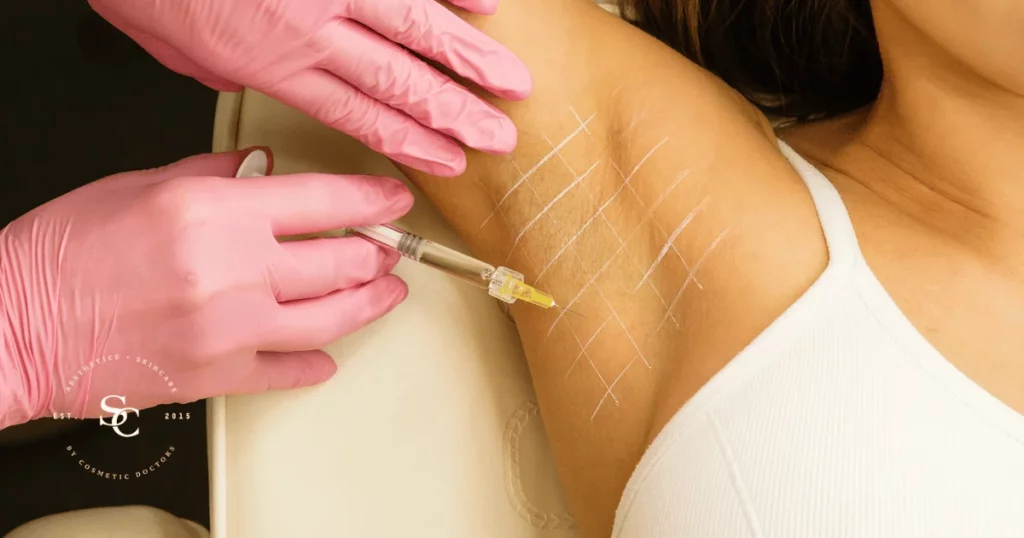Understanding Hyperhidrosis: An Overview
Hyperhidrosis is a medical condition characterized by excessive sweating that goes beyond the body’s normal cooling mechanisms. This condition can significantly impact an individual’s daily life, causing discomfort and embarrassment. In this comprehensive guide, we will delved into the world of hyperhidrosis, exploring its nature, causes, treatment options, and strategies for coping with excessive sweating.
Identifying the Symptoms of Hyperhidrosis
The primary symptom of hyperhidrosis is excessive sweating that occurs even when the body is at rest and not overheated. This excessive perspiration can affect various parts of the body, including the palms, feet, underarms, and face.
Causes and Risk Factors of Hyperhidrosis
Understanding the causes and risk factors of hyperhidrosis is essential:
Primary Hyperhidrosis:
This type of hyperhidrosis has no underlying medical cause and often starts during childhood or adolescence. It may be genetic and tends to affect specific areas of the body.
Secondary Hyperhidrosis:
Secondary hyperhidrosis typically results from an underlying medical condition or medication side effects. It can affect the entire body and often develops later in life.
Different Types and Stages of Hyperhidrosis
Hyperhidrosis generally categorized into two main types: primary and secondary. Within these categories, there are no distinct stages; instead, the condition’s severity can vary from mild to severe.
Diagnosis: How Hyperhidrosis is Identified
Diagnosing hyperhidrosis involves a thorough evaluation by a healthcare provider, which may include a medical history review and physical examination. In some cases, additional tests like the starch-iodine test or thermoregulatory sweat test may be performed to assess the extent of sweating.
Treatment Options for Hyperhidrosis
Several treatment options can help manage hyperhidrosis and reduce excessive sweating:
- Antiperspirants:
Prescription-strength antiperspirants containing aluminum chloride can be effective for managing excessive sweating.
- Iontophoresis:
This non-invasive treatment involves passing a low electrical current through the affected area, such as the hands or feet, to reduce sweating.
- Oral Medications:
Certain oral medications, such as anticholinergics, may be prescribed to control excessive sweating.
- Anti Wrinkle Injections Injections:
Botulinum toxin injections can temporarily block nerve signals that trigger sweat production, providing relief from hyperhidrosis.
- Surgery:
In severe cases, surgical procedures like sympathectomy or sweat gland removal may be considered.
Coping Strategies for Hyperhidrosis
Coping with hyperhidrosis involves adopting strategies to manage the condition’s impact on daily life:
- Clothing Choices:
Wear moisture-wicking and breathable fabrics to help manage sweat and reduce odor.
- Frequent Hygiene:
Maintain good personal hygiene practices, including regular showers and changing clothes as needed.
- Carry Supplies:
Keep extra clothing, antiperspirant, and absorbent pads on hand for quick adjustments throughout the day.
- Emotional Support:
Seek support from friends, family, or support groups to help cope with the emotional and social aspects of hyperhidrosis.
Impact of Hyperhidrosis on Daily Life
Hyperhidrosis can significantly affect an individual’s daily activities, work, and social interactions. It may lead to discomfort, embarrassment, and decreased quality of life.
Long-Term Management of Hyperhidrosis
Managing hyperhidrosis often involves ongoing care and treatment:
- Regular Follow-Ups:
Continue to see a healthcare provider for follow-up appointments and adjustments to treatment as needed.
- Lifestyle Modifications:
Implement lifestyle changes, such as managing stress and avoiding triggers, to help control excessive sweating.
- Supportive Measures:
Utilize coping strategies and seek emotional support to maintain a positive outlook and minimize the impact of hyperhidrosis on daily life.
In conclusion, understanding hyperhidrosis, its causes, treatment options, and strategies for coping is crucial for effectively managing this condition and improving overall well-being. Consulting with a healthcare provider or dermatologist can provide guidance on the most suitable treatments and coping strategies for individual concerns.



















